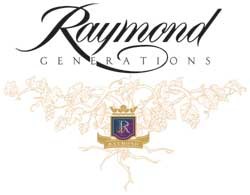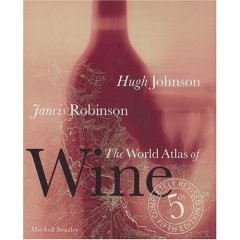I must take issue with my friends Tara and Rob who, in a recent “Main Ingredient” column for the Sunday Gazette-Mail, suggested there is a double standard at play when it comes to wines for drinking and wines for cooking:
“If we’re going to pay a lot for a bottle of bliss that’s been coaxed to perfection by some grape guru, the last thing we want to do is watch as medium-high heat scrambles its molecules,” they state in the November 4,” Main Ingredient .” In other words, they seem to be saying, it’s not worth wasting good wine to flavor a dish. And, you don’t have to like a wine to cook with it. Believe me when I say I applaud anyone who can find good, bargain-priced wine for any use. As a matter of fact, my wine mission in life is to locate wines that meet those criteria. But why would you want to cook with a wine (cheap or expensive) that you wouldn’t want to drink?
And I really must take exception to this statement: “Any dry white of your choosing will keep for at least a month in the fridge, giving you the flexibility to deglaze at a moment’s notice.” I checked with the Main Ingredient team just to verify that statement and was assured by them that, in fact, an inexpensive white wine they use to cook with on a regular basis does not seem to deteriorate over time nor does it adversely affect the dishes they prepare.
I’ve had different experiences. While you certainly don’t need to spend more than $5 or $10 on a wine you will use for cooking, I think it does matter that the wine is both sound (meaning that it has not developed any off tastes or odors as a result of being opened for more than a couple of days) and that it is pleasant tasting. If not, any flaws in the wine will be manifested in the dish. In my experience, no wine that has been opened – particularly a white - will keep for a month in the refrigerator unless you take steps to prevent oxidation. Once opened, unused wine, especially whites, will begin to go bad fairly quickly unless you pour them into a smaller container and stopper them. This eliminates the air space and preserves the wine.
One other method of preserving your partially used wine is to pump the air out of the bottle by using something like a Vacuvin Wine Saver. Vacuvin employs the use of a rubber stopper that is placed in the bottle opening and then a device which is placed on the stopper to pump out the oxygen. These are widely available at wine shops and grocery stores for around $15.
A more important reason to drink the same wine you’re cooking with is for the sheer pleasure of the food and wine pairing experience. Since most recipes call for a modest amount of wine in them, you will most certainly have enough left over to enjoy with the meal . In fact, some of us actually have a glass of that same wine while we’re cooking.
So, take it from someone who has a great tolerance for all manner of mediocre wine (remember, I’m a home wine maker) and who also has a fondness for just about any food when I say: give your dish a sip of the same good wine you like to drink. After all, you’ll be tasting it again once the dish is served at the table.





 The final two wines were both well-liked and stood out for unique reasons. The Chateau Grimard Bordeaux 2005 ($10.99/btl.) was unique in that it did not stick out like a sore thumb as have the Bordeaux blends included in this tasting in past years. It had an elegant nose although somewhat more closed (maybe this should have been the hint!). It was subtle, medium-bodied and had a polished finish.
The final two wines were both well-liked and stood out for unique reasons. The Chateau Grimard Bordeaux 2005 ($10.99/btl.) was unique in that it did not stick out like a sore thumb as have the Bordeaux blends included in this tasting in past years. It had an elegant nose although somewhat more closed (maybe this should have been the hint!). It was subtle, medium-bodied and had a polished finish.
 To truly enjoy that delicious nectar we all love, there is nothing more pleasurable than sipping from crystal stemware. You can spend a lot of money on wine glasses from renowned companies such as Riedel ore Speiglau, or you can get similar quality by purchasing your wine glasses and crystal decanters right here in West Virginia . Masterpiece Crystal in Jane Lew produces magnificent handmade, lead-free crystal wine glasses and carafes. Go to
To truly enjoy that delicious nectar we all love, there is nothing more pleasurable than sipping from crystal stemware. You can spend a lot of money on wine glasses from renowned companies such as Riedel ore Speiglau, or you can get similar quality by purchasing your wine glasses and crystal decanters right here in West Virginia . Masterpiece Crystal in Jane Lew produces magnificent handmade, lead-free crystal wine glasses and carafes. Go to  ground black pepper.
ground black pepper.